Alert Status Overview
A description of the alert status such as Active, Acknowledged, Completed
After you create a monitor and associate it with a trigger and optionally a destination, you can enable the monitor. The monitor runs on its configured schedule to check for the specified condition, and will update when the condition is detected, completed, or acknowledged.
The Alerts page lists all of the alerts raised, and provides information about them including start and stop times, status, severity, acknowledgement status, and the related monitor that triggered the alert.

From the Alerts page, click an alert to display alert details:
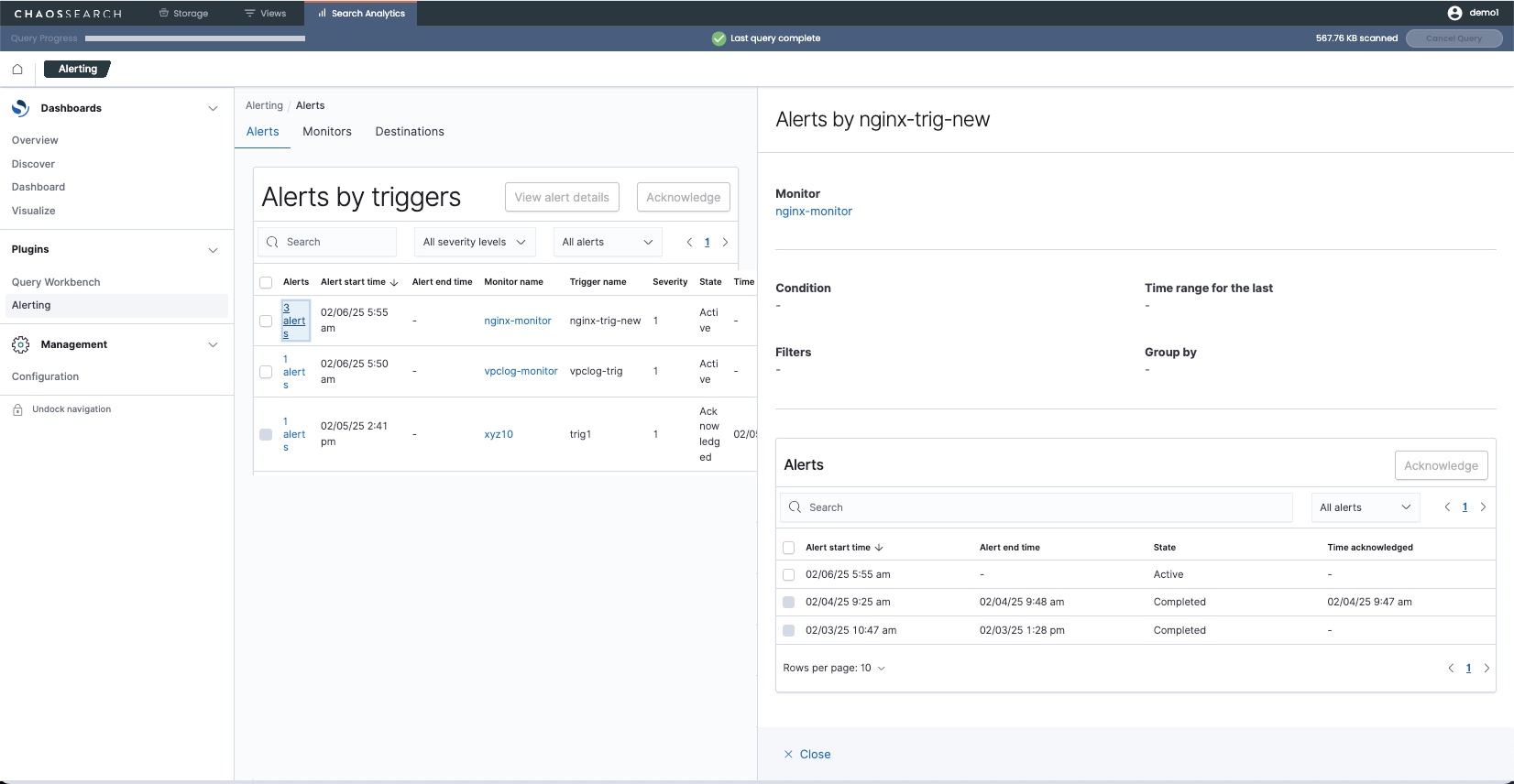
On the Alerts page, click a monitor name for an alert to drill-down to more information about the monitor details and and to review a timeline of its status history for the last hours. For example:
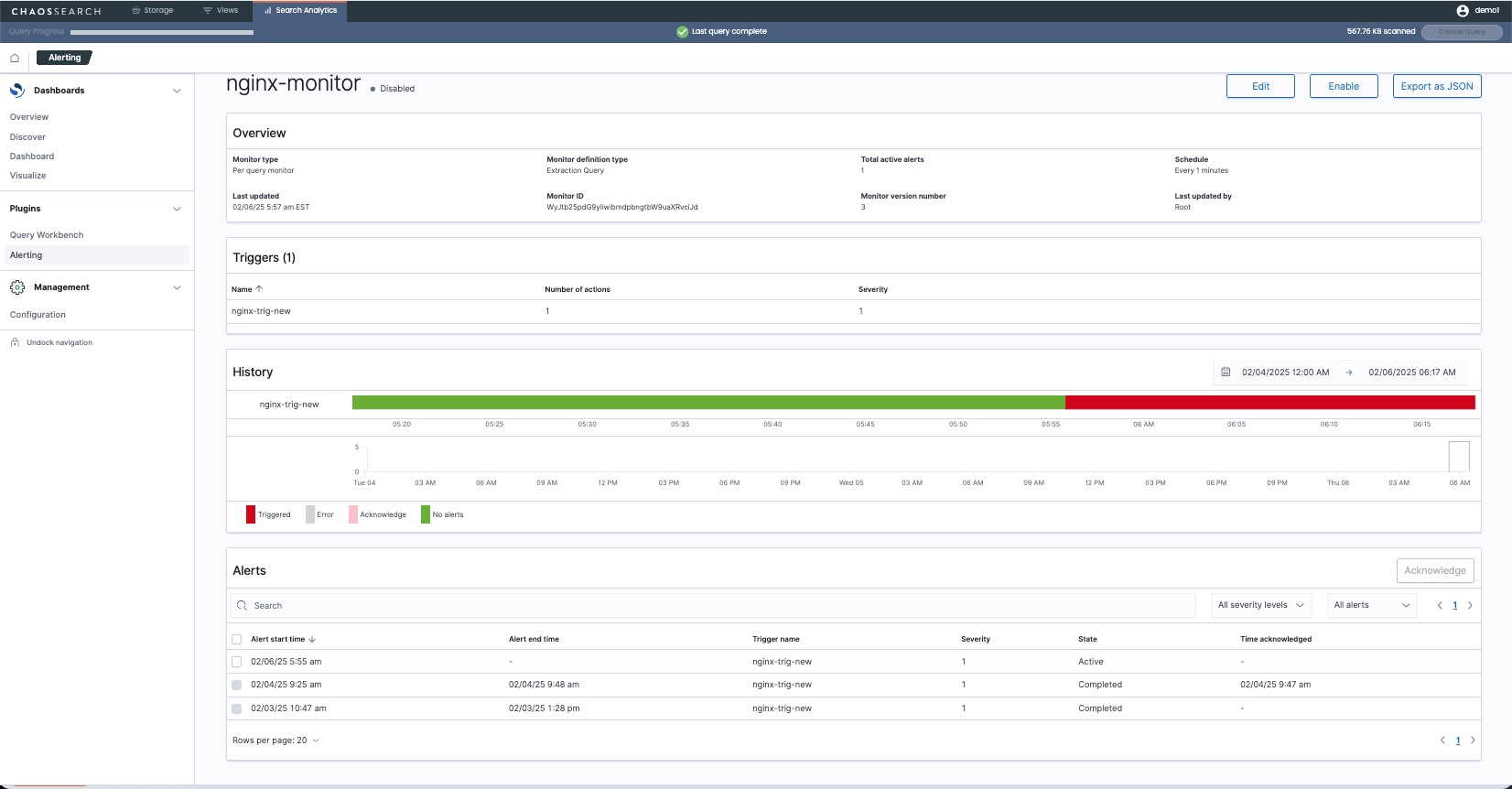
Alert Lifecycle
An alert has the following stages in its lifecycle:
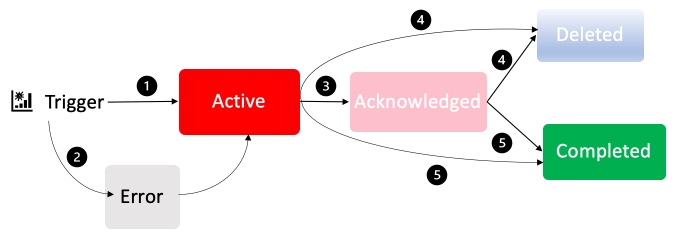
- A trigger defined for an enabled monitor checks for conditions on a scheduled basis. When a condition is true, an active alert is raised.
- If a trigger check fails for an enabled monitor, an error condition is reported until the configuration problems are resolved. The trigger could then create an active alert.
- Optionally, a user can acknowledge an active alert to show that the alert condition is in review or being resolved.
- If the monitor or trigger related to an alert is deleted, the alert is moved into the deleted state.
- When the trigger that previously was true evaluates to false, the alert transitions from the active to the completed state.
Acknowledging an Alert
Administrators can acknowledge an active alert to show that someone is already investigating it. You can acknowledge an alert from the Alerts page or the Monitors > Alerts area.
To acknowledge an alert:
- Select one or more alerts that are in the Active status.
- Click Acknowledge.
- If prompted to confirm that you want to acknowledge the alerts, confirm and proceed. The system displays a message to confirm that one or more alerts were acknowledged.
An acknowledged alert changes from red (triggered) to pink (acknowledged) in the status timeline. At the very end of the alert status row for the monitor below, the state transitions from green (no alerts), to red (alert active), to pink (acknowledged).
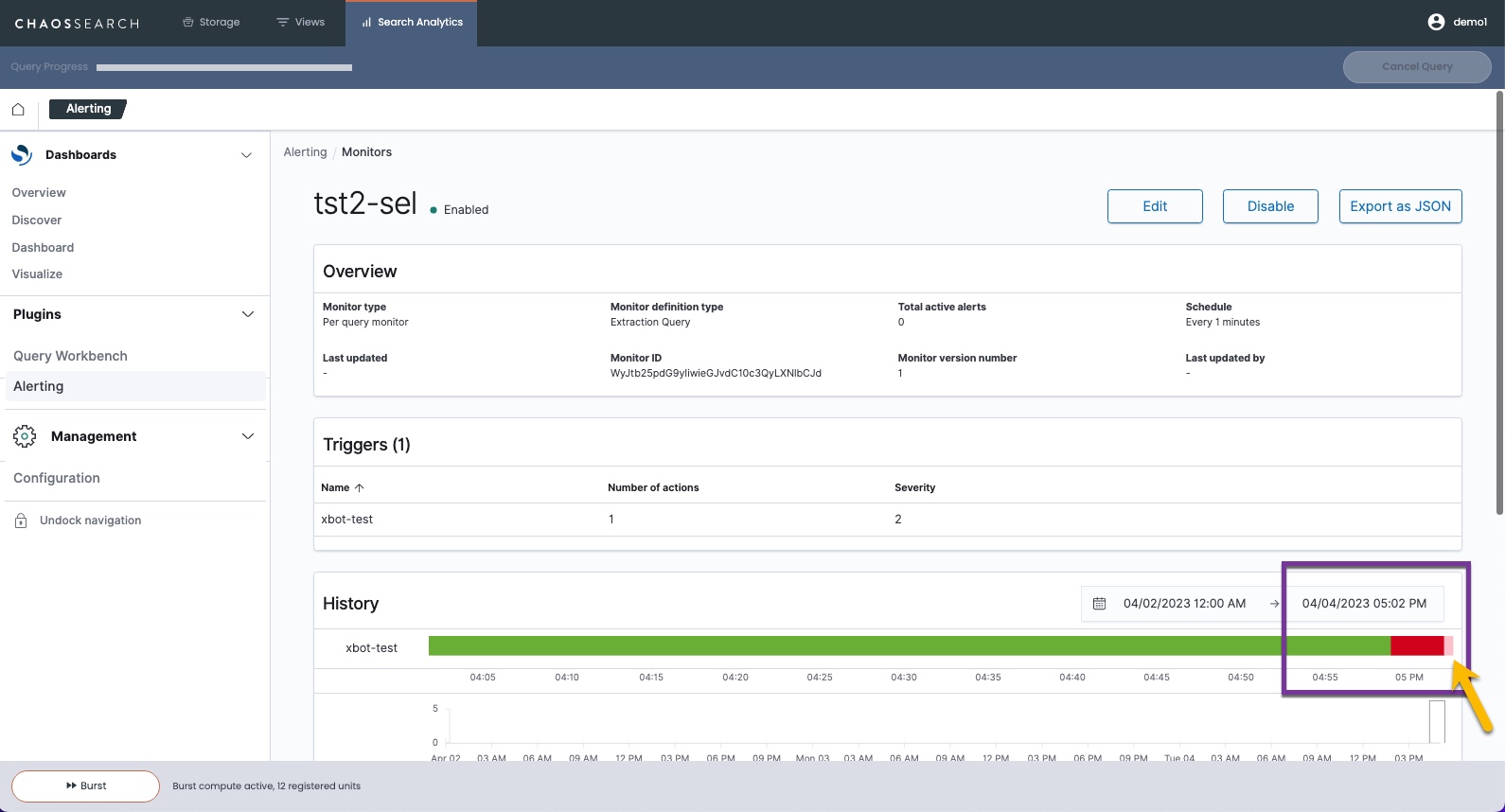
If you hover over a state transition in the line chart, a status message appears with more information about the alert, its start time, stop time (when applicable), and status. A sample acknowledgement message follows:

Completing an Alert
After an alert is triggered, and optionally acknowledged, the status remains in the red (or pink acknowledged) color until the monitor tests for the condition and the condition is no longer true. At that stage, the alert is completed and the status returns to green. For example:

The condition that triggered the alert might have been resolved on its own, or might have been resolved through service intervention. In either case, the alert is complete because the condition that triggered the alert is no longer true.
Status when Monitor is Disabled
When a monitor is disabled from running, the status of the alert is carried on until the monitor is re-enabled. For example, if an alert has been triggered, the status will remain red if the monitor is disabled.
Error Status
An alert might show an error when there is a problem with the trigger or the destination. When an error occurs, a message appears in the Alerts page and a gray status area appears in the history line. The corrective action is to edit the monitor, trigger, and/or destination details, and fix the issue.
The following example shows a status line for a trigger that was updated, and an error was introduced in the trigger definition:
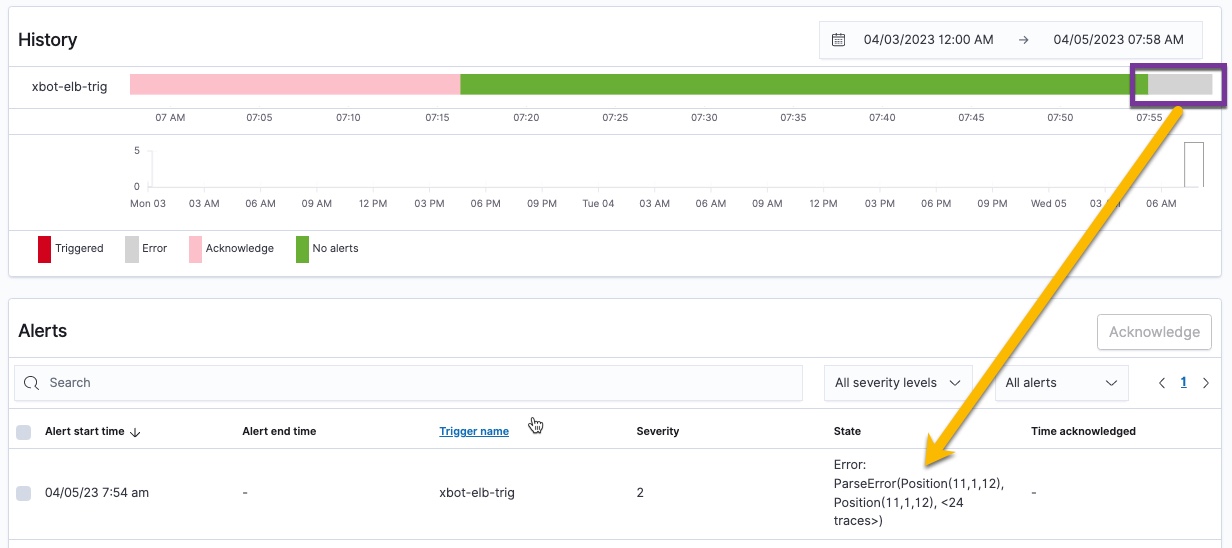
Edit the monitor associated with the trigger to correct the trigger definition. After you fix the issue and update the monitor, the system updates the history to show either an active alert or cleared conditions:
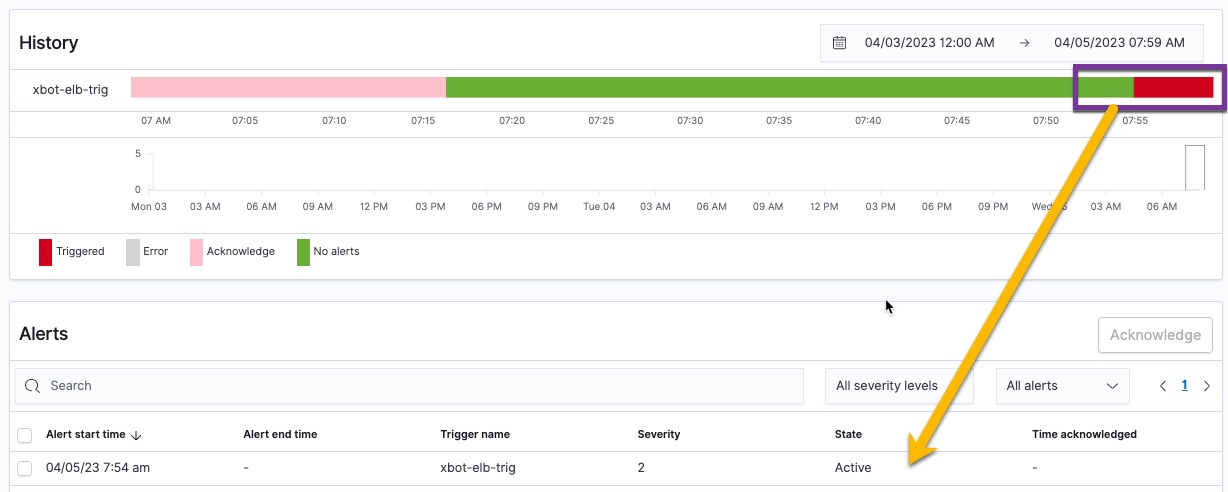
Updated 7 months ago
